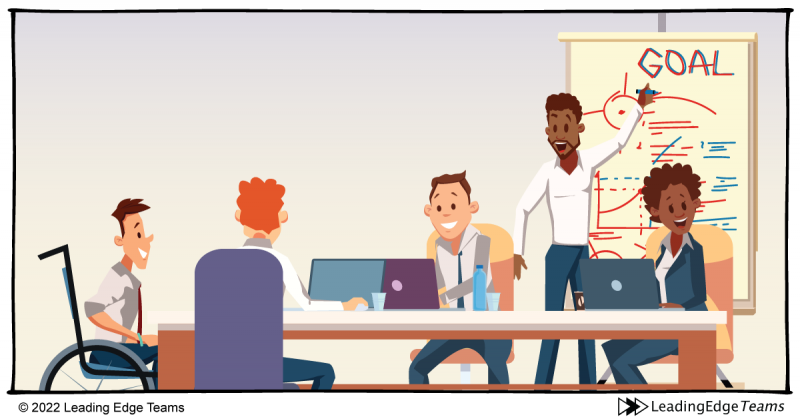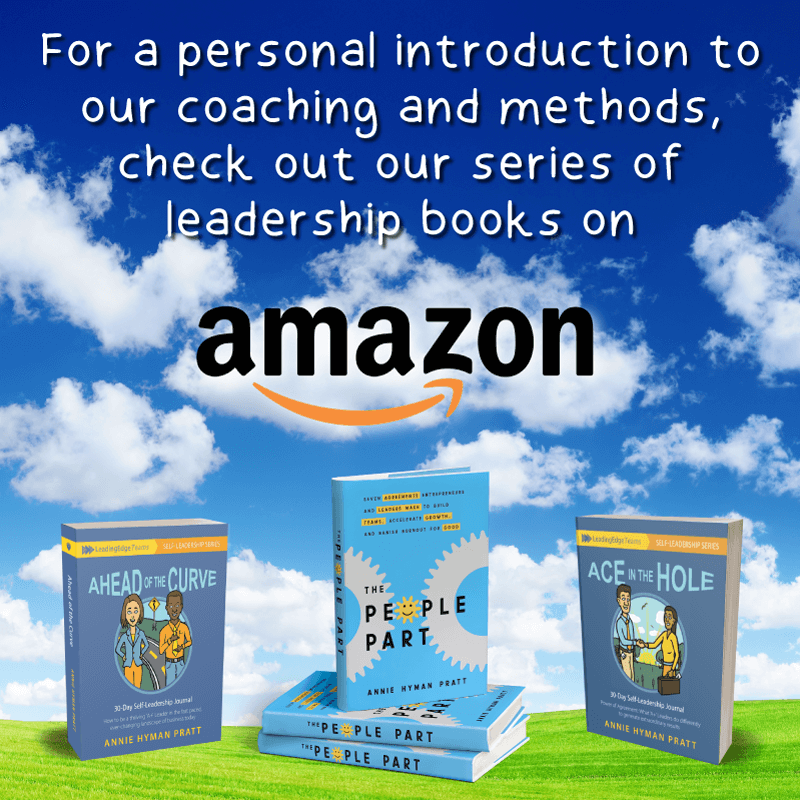Self-Leadership and secure relationships, the Business Operating Triangle, role clarity and agreements—comes into play when we’re talking about the way a team interacts and the habits that make up culture and the fabric of each day’s work. Many of the best practices that make up an effective culture are combinations of multiple behaviors that we demonstrate all at once. But we need to clearly define those behaviors and essentially give some instruction for how to demonstrate each best practice. Then team members can learn and practice them until they become habits. We’ve identified four best practices that every organization needs to cultivate in their habits and culture.

#1: Inviting Engagement and Candid Dialogue
The two strategies I teach to foster open, engaged, and highly collaborative communication are:
- Soliciting engagement through asking for opinions
- Talking tentatively
Often when my team comes into an organization, we find that they have been operating in a paradigm in which the CEO does most of the talking and critical thinking. They often do this while fielding very little information or input from the team. The cost of this is high. Leaders are prone to making poor decisions when they lack the critical information and perspectives possessed by their people on the ground. This habit of CEOs is common because when they start a business, they are the ones who, for example, understand their clients most—since they work with them directly! But when the business grows, and the CEO’s role moves into growth and strategy and away from client interactions, they may find it hard to accept that they no longer know the clients or their situations as well as they used to. In fact, it’s usually the client delivery team and salespeople who have the most current and relevant information and insights. The CEO should invite opinions from them!
Creating Habits
Inviting engagement and soliciting relevant opinions works best when it’s a habit that becomes part of the culture. You might have heard someone say, or even thought to yourself, I wish we had a more open, collaborative, and inclusive culture. I almost never get to contribute my ideas or share important feedback that would benefit the company! I guess no one cares what I think. In fact, the other people usually care a lot about relevant input, but other assumptions and habits get in the way. They might think they don’t have the time to ask, or they just might not be in the habit of asking. Or they might assume that if someone has something relevant to say, they will. However, over the years I’ve learned that people in the workplace, as a group, generally stay quiet and don’t volunteer extra information unless they’re asked. In fact, to be respectful to others, most people feel it’s not their place to speak until asked.
“What do you think?”
To create an open, collaborative, inclusive culture, you’ve got to habitually invite input and opinions whenever you’ve got multiple stakeholders involved in a project or issue. I have trained myself to always be asking, “What do you think?” Because I’m always asking, they don’t wonder whether I want their opinion—of course I do! Their input and opinions are extraordinarily valuable and necessary for our success. Team members who work with me now often anticipate this question and offer their opinions even before I ask.
There is a second dialogue behavior that goes hand in hand with the question “What do you think?” that actively cultivates an environment in which people feel free to share what’s really on their minds. It’s called “talking tentatively.” Here’s how it works: Let’s say that I’m negotiating to solve a problem with my team about the schedule for a high-stakes project. I have a solid opin- ion about it, but I also want their opinions and input before I make a final decision, because I might be missing something or perceiving the situation incorrectly. I know (from tons of experience) that if I share my opinion in an authoritative, definitive way, it sounds like I’ve made the decision, and therefore the dialogue and input from the team will come to a screeching halt. No one wants to challenge the boss’s decision once it’s made. And if I ask for thoughts at that point, it sounds like a rhetorical question and leaves people wondering if it’s a test of their compliance.
Tentative Talk
Instead, whenever I’m working with the team to solve issues, plan, or make decisions, I’m always talking tentatively. Using tentative language implies that my ideas and opinions aren’t fixed and final. It will likely sound something like this: “I’m thinking we should move project A forward and delay project B until second quarter. What do you think?” If I present my ideas as a directive or a demand, I shut down the collaboration, as team members resign themselves to doing what I say, whether they think it’ll work or not. But if I say, “I’m thinking . . . What do you think?” This lets the team know that I’m receptive to feedback and open to change. It creates space for others to ask questions and bring challenges forward. It also allows you to test ideas, theories, and alternative solutions without signaling a clear bias. Whatever plans and agreements result are better set up to succeed.
Some more examples of tentative talk include:
- “Given these facts, I’m considering this (plan, solution, etc.) . . .”
- “I’ve considered (context), which is why I’m intending to . . .”
- “The story I’ve told myself about this situation is . . .”
- “The meaning I’ve made of this information is . . .”
- “I’m not certain of this, but here’s how I see it . . .”
To learn more about the remaining 4 best practices that every organization needs to cultivate in their habits and culture and go in-depth into the 7 agreements that every team and leader needs to create a thriving and sustainable business, order a copy of my newly released book, The People Part: Seven Agreements Entrepreneurs and Leaders Make to Build Teams, Accelerate Growth, and Banish Burnout for Good.
Here’s to your leadership success!
Warmly,
Annie










